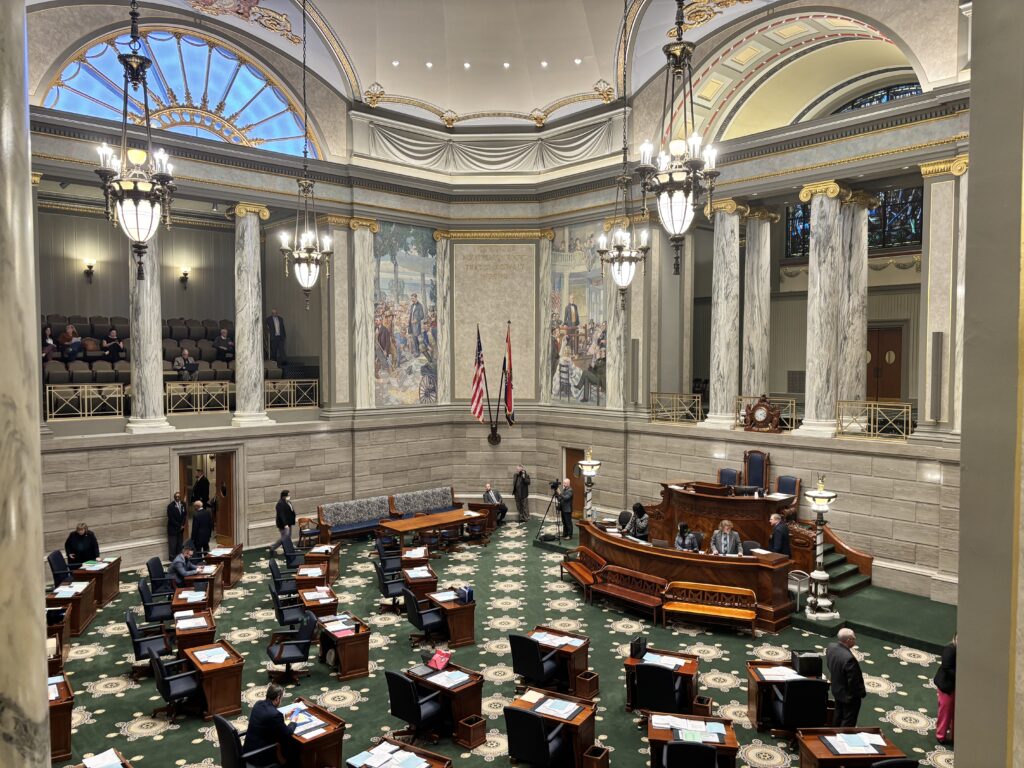Why the Utilities want it and why you should NOT! Once you understand this you will understand why we must keep SB 4 from even coming to a vote!

This week, you may have heard much discussion about the “Future Test Year” (FTY) Model used in utility rate-setting.
Mike Cierpiot, the Senator for the Utility Lobby (technically, he is the Senator for the 8th Senate District, but he certainly didn’t sound like he had any of their interests in mind when presenting his SB 4 substitute last Tuesday on the Senate Floor) proposed allowing utilities in Missouri use this model in proposing utility rates.
The FTY model has several potential impacts on utilities and consumers. Still, it appears all the upside lies on the utilities side of the fence, and all the downside lies on consumers and small businesses.
Why the Utilities and their Senate champion, Senator Cierpiot want the Future Test Year (FTY) Model:
- Encouragement of Infrastructure Investment: FTY allows utilities to project future costs, encouraging investment in infrastructure. This is particularly relevant when utilities must upgrade or expand to meet future demand or comply with new regulations (Source: natlawreview.com, prnewswire.com). Senator @MikeCierpiot argued that our State Grid needs to be completely replaced. Senator Joe Nicola argued that this would amount to a zero-interest loan funded directly by consumers. Finally, Senator Tracy McCreery pointed out that part of the deal the utilities made to be monopolies required them to continually upgrade their facilities so they could maintain efficient, reliable, and affordable services to the people of Missouri.
- Financial Stability: By setting rates based on future cost projections, utilities can achieve more stable finances, reducing the volatility associated with historic test years (HTY) where rates are based on past performance (Source: natlawreview.com).
- Reduced Regulatory Lag: FTY can help mitigate regulatory lag, the time between when a utility incurs new costs and when these costs are reflected in rates. This can lead to more timely recovery of investments (Source: sciencedirect.com).
- Increased Frequency of Rate Cases: Utilities might file for rate cases more frequently to update rates based on projected costs, potentially leading to more administrative work but also to rates that more closely match operational costs (Source: sciencedirect.com).
Why Consumers (aka the people) should NOT want it:
- Rate Changes: Consumers could experience more frequent or significant rate changes due to the forward-looking nature of FTY. This might mean higher rates if future costs are projected to increase, but also potentially lower rates if efficiencies or cost reductions are anticipated (Source: sciencedirect.com).
- Accuracy of Rate Setting: If future projections are accurate, consumers could benefit from rates that better reflect the true cost of service delivery. However, there’s also a risk of overpaying if projections are too high or underpaying if they’re too low (Source: pacodeandbulletin.gov). Ask yourself, how many projects of this kind come back better than expected?
- Transparency and Complexity: The use of FTY might complicate the rate-setting process for consumers, making it less transparent since it relies on forecasts rather than historical data. This necessitates clear communication from utilities about how rates are determined (Source: pacodeandbulletin.gov).
- Impact on Public Interest: There’s ongoing debate about whether FTY serves the public interest. While it might stabilize utility finances, it could also lead to rates that don’t immediately reflect cost savings or efficiencies, potentially affecting consumer affordability (Source: sciencedirect.com).
General Considerations:
- Forecasting Challenges: The accuracy of FTY depends heavily on the quality of forecasting. Errors in predicting future costs, demand, or regulatory changes can lead to discrepancies between set rates and actual expenses (Source: sciencedirect.com).
- Regulatory and Policy Implications: The adoption of FTY can influence regulatory practices, potentially leading to new policies or adjustments in how utilities are regulated, which can have broader implications for energy policy and economic development (Source: prnewswire.com).
- Stakeholder Engagement: Given the speculative nature of FTY, there might be increased scrutiny from regulators, consumer advocates, and other stakeholders, necessitating robust stakeholder engagement to ensure that projections are reasonable and fair (Source: sciencedirect.com).
In summary, while the FTY Model might offer utilities a clearer path to financial stability (on the backs of the consumers) and encourage necessary infrastructure investments (which should not have been put off), it also introduces complexities and potential volatility in rates for consumers, with outcomes highly dependent on the accuracy of future projections.
This article was originally posted on X!
— ✝️ 🇺🇸 Mike Compton 🇺🇸 ✝️ (@MikeCompton) February 8, 2025

